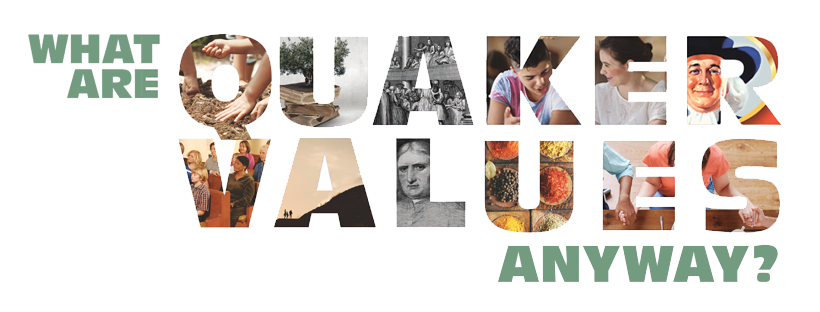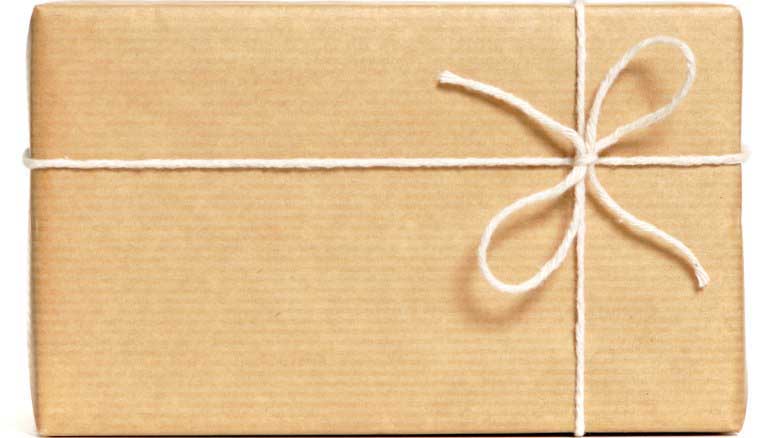Connecticut Friends School
Connecticut Friends School is built on these Six Quaker Values. For each testimony, below, we list several activities in italics, followed by the way we apply and weave each activity into our curriculum.
SIMPLICITY
Use financial and natural resources carefully.
We make use of our existing rich offerings such as public libraries, museums, nature centers, and historical sites.
Value the spirit over material objects.
We celebrate acts of kindness and generosity instead of bringing toys or electronics for show and tell.
Keep popular culture in perspective at school to avoid distraction from what is truly important.
We attune students to the wonders of nature and a sense of competence through hands-on crafts such as weaving.
Keep life simple so we are free to live in harmony and alignment with soul’s purpose.
Service learning is a priority.
• “Favorite Writings on Simplicity,” by Michel Avery
The practice of simplicity is one of constantly making choices.
• “Finding Simplicity in My Life,” by Robert Bennett
This is easily the testimony I think of, and struggle to practice most, in my life.
• “Life in a Box,” by Andrew Huff
It’s not about what’s inside the bin. It’s about everything outside it.
PEACE
Build conflict resolution skills.
Foster effective communication and alternatives to violence.
See conflict as a springboard to moral growth.
Use the conflict at hand as part of curriculum, asking each person involved to take responsibility for his or her part in escalating tension.
Seek elegant, simple solutions to problems or disagreements.
Encourage creative problem-solving and assume students have worthy, practical ideas.
Make decisions by consensus or the “sense of the meeting.”
Empower students to share responsibility for the school culture, using the idea of voting sparingly.
• “A Peace Perspective,” by Mary Lord
How do we build real peace that is more than the absence of war?
• “The Golden Rule Shall Sail Again,” by Arnold (Skip) Oliver
In 1958, five men in a sailboat challenged American nuclear testing.
• “Finding a Way to Peace,” by Christopher Stern
If we do not learn to forgive and love, then how can we live in peace?
INTEGRITY
Let your life speak: your outer life reflects your inner life.
Nurture each student’s inner moral compass, cultivating inner motivation not driven by externals such as grades.
Treat others with respect and honesty.
Set a tone of high expectations of students’ work and behavior, guiding students in the process of self-assessment.
Acknowledge interconnectedness and essential oneness.
Anchor academics in thematic studies and an integrated curriculum.
Draw out the teacher within.
Mirror students’ gifts and interests, giving them choice in projects and assignments.
• “Witnessing to Integrity in an Untruthful World,” by Shelley E. Cochran
Often, telling the truth seems relatively easy compared to witnessing to Truth.
• “Six Steps for Investing with Integrity,” by Pamela Haines
Our choices around money need to be based in the values and faith that sustain us.
• “Student Voices Project: Focus on Integrity,” by FJ Staff
As one teacher said, “Integrity doesn’t always look like you expect it to look.”
COMMUNITY
Connect with all members of the community.
Plan school activities that enable students to bridge differences and create a close, working group.
Be our authentic selves.
Create a safe, nurturing atmosphere in which children can share all sides of themselves, such as asking questions or making mistakes.
Balance needs of the individual with needs of the group.
Address and bring to the surface this seeming paradox while trying to lift up those in emotional turmoil.
Teach respect for everyone and the idea that everyone has a piece of the truth.
Gather in silent meeting for worship and listen to other people’s thoughts without judgment or comment.
Stretch beyond the school day to support a fellowship of parenting.
Organize events such as overnight trips to Powell House, all-school potlucks, or the intergenerational “grandfriend’s day.”
• “A Community Formed for Faithfulness,” by Marcelle Martin
Spiritual companionship can take many forms.
• “Community Dinner at Brooklyn’s Quaker Diner,” by Carl Blumenthal
One extra meal a month may seem like a pinch of salt in a pot of chicken soup.
• “A Quaker Retirement Community Faces the Pandemic,” by Nancy Thomas
We do what we can to reach out, bless others, and choose life.
EQUALITY
Respect different people and different ideas.
Encourage families of diverse race, socioeconomic status, family structure, and faith backgrounds to apply.
Honor all faiths.
Do not try to convert students to Quakerism.
Celebrate a rich community made up of many cultures.
Invite members of various nationalities to share their stories in the classroom.
Reflect a broad, inclusive spectrum of the global family.
Ensure that resources, books, and units of study reflect this goal.
• “The Social Justice Testimony,” by Dwight L. Wilson
Joining a meeting does not purify us of racism.
• “Equality Among Today’s Vikings,” by George Lakey
Quaker testimonies don’t have to be compromised in politics.
• “The Spectrum of Equality,” by Aria Gratson
The first time I was aware of someone using “gay” as an insult was in sixth grade.
STEWARDSHIP
Protect and care for the Earth in a sacred trust.
Walk lightly on the Earth, recycle and reuse whenever possible, and reduce the amount of energy we consume.
Promote environmental, economic, and social sustainability.
Teach students to appreciate their world via scientific inquiry, artistic expression, outdoor education adventures, and a thorough exposure to natural resources.
Teach social justice and the need for equal access to resources.
Begin in the youngest classroom to instill a sense of social responsibility and service work such as coat drives, fundraisers, partnerships with outside organizations, and many more initiatives.
• “Composting as Holy Sacrament,” by Louis Cox
Composting is about radical transformation—our only hope for our uncertain future.
• “Stewardship Brought to the Streets of Our Capital,” by Jonathan Kornegay
I got to see the beauty of activism, stewardship, and Quakerism working together.
• “Energy Use in the Classroom,” by Louise Pappa
When I was in sixth grade, I helped make a significant change at my school.
This is a document written and distributed by Mark Dansereau and Kim Tsocanos, co-heads of Connecticut Friends School in Wilton, Conn.




[…] equality, and service are often sited as Quaker values, and are remembered with the acronym “SPICES.” Share this:ShareFacebookEmailLike this:LikeBe the first to like this. Posted by […]
[…] Quaker conversion or conviction I have read or listened to on the Internet include an affection for Quaker principles or “testimonies.” These are: simplicity, peace, integrity, community, equality, and stewardship. I do not find […]
[…] to a piece by Connecticut Friends School on the Friends Journal website, having integrity means letting your inner life match your outer […]
Hello, I have a friend who is in recovery for drug abuse and has adopted the Quaker Testimonies S-P-I-C-E-S as his source of inspiration for a higher power. I would like to find a small pendant/cartouche ingraved with these letters for him to wear as a constant reminder of his commitment. Since Quakers typically do not wear jewelry do you know where I might find an item such as this?
Thanks!
[…] greater connections to my source. I have found my deepest connections in Quakerism. I love the SPICES. As I chew on the concept of God, I feel I need to sprinkle it with Equality. I do believe, no, […]
Just from my experience, many of my (F)friends, the more liberal Quakers, do wear jewelry, maybe not the more disposable or wasteful type. But perhaps your friend does not. Our unprogrammed Friends Meeting tries to be very mindful as individuals and in our group discussions to see how we can better lead more simple lives with less mental clutter and busy-ness, but we do not dress in the severe plain way of early Quakers. Good luck finding the cartouche.
[…] feel compelled to connect to a higher power, the tradition of meeting for worship embodies several core Quaker beliefs that help Friends lead a mindful, connected and fulfilling […]
[…] stuff and relate to other values you find meaningful- the Kwanzaa principles, the Beatitudes, the Quaker Testimonies, polytheist virtues and so forth. It’s important to clarify that while the 7 principles are […]
[…] it our testimony of peace, or S.P.I.C.E.S. as a whole, that binds us […]
[…] Here’s a page with one Quaker organization’s take on what these mean: https://oldfj.wpengine.com/s-p-i-c-e-s-quaker-testimonies/ […]
[…] the Quaker values that Bayard’s grandmother instilled in the family (specifically the SPICES). Because Bayard was an out homosexual, he was often seen as on the periphery, even though he […]
Under Quaker Testimony Equality:
Honor all faiths: Do not try to convert students to Quakerism.
Respect different people and different ideas: Encourage families of diverse race, socioeconomic status, family structure, and faith backgrounds to apply
Is there a contradiction here?
[…] to discuss how our schools bring Quakerism to life across 3 divisions. One take-away was to choose a testimony each year that the entire school would use as a guide for the year. Banners would be created to […]
What are the relations of Quakerism to Christianity? Does Quakerism has links with Christian denominations?
[…] can also mean being the person to intervene should someone offer a message that does not reflect Quaker values.) And then there’s ending the meeting when it’s both close to an hour but also has […]
[…] the Quaker testimony of six values, known as the “SPICES” of “simplicity, peace, integ… would be worthwhile attributes for every urban planner to embrace in their daily life. This is not […]
[…] from the Quaker tenets of peace, community, and equality (Read more about Quaker values here: https://oldfj.wpengine.com/s-p-i-c-e-s-quaker-testimonies/). Honestly, I was 12 and no more drawn to Russian than I would have been to a number of other […]
[…] S-P-I-C-E-S: The Quaker Testimonies […]
[…] I thought “Quakers are peaceful, and they are conscientious objectors,” and that was initially what drew me to the Quaker Faith. But there is so much more to it. The Quaker Testimonies are nothing at all like Christian Science Testimonies. The Quaker Testimonies mean “Quaker Values.” The acronym for the Quaker Testimonies is “SPICES.” It stands for: Simplicity, Peace, Integrity, Community, Equality, and Stewardship. (See: http://oldfj.wpengine.com/s-p-i-c-e-s-quaker-testimonies/) […]
http://beautyitselfispurpose.branchable.com/posts/Hearty_Quaker_Testimonies_-___34__SELFISH__34___mnemonic/
I always have felt there is something silly about a mnemonic I hear a lot of Quakers refer to as “the Quaker testimonies.” Simplicity Peace Integrity Community Equality and Sustainability. I like these words and I think generally it is good for people to pursue them in their way. I have noticed that some Friends are quite focused on these words in a way that seems geared at making the world a better place. I am glad for that and for these Friends. But also, I am glad for Quakers who might just go to Meeting for silence or consider themselves Friends “outside the Meetinghouse” in smaller things.
So I would have written this for Friends Journal, but it is a bit too irreverent. I think what I want to do is to make fun of the SPICES with my own SELFISH mnemonic.
Selfcare. I don’t know about other Friends, but I am deeply committed to the Quaker testimony of self care. I say that as a borderline joke. But I also am deeply committed to selfcare. I just am. Ephemoral. All friends die and change every day. Laughing.
Feeding.
Introspecting. Silent. Hearts.
This entry is not half hearted, but is more like half minded. Unfinished thoughts. Mostly a joke to begin with. Interested if anyone posts a reply on my blog.
[…] strive to “treat others with respect and honesty” and teach “that everyone has a piece of truth.” 10 million American men were drafted to serve […]